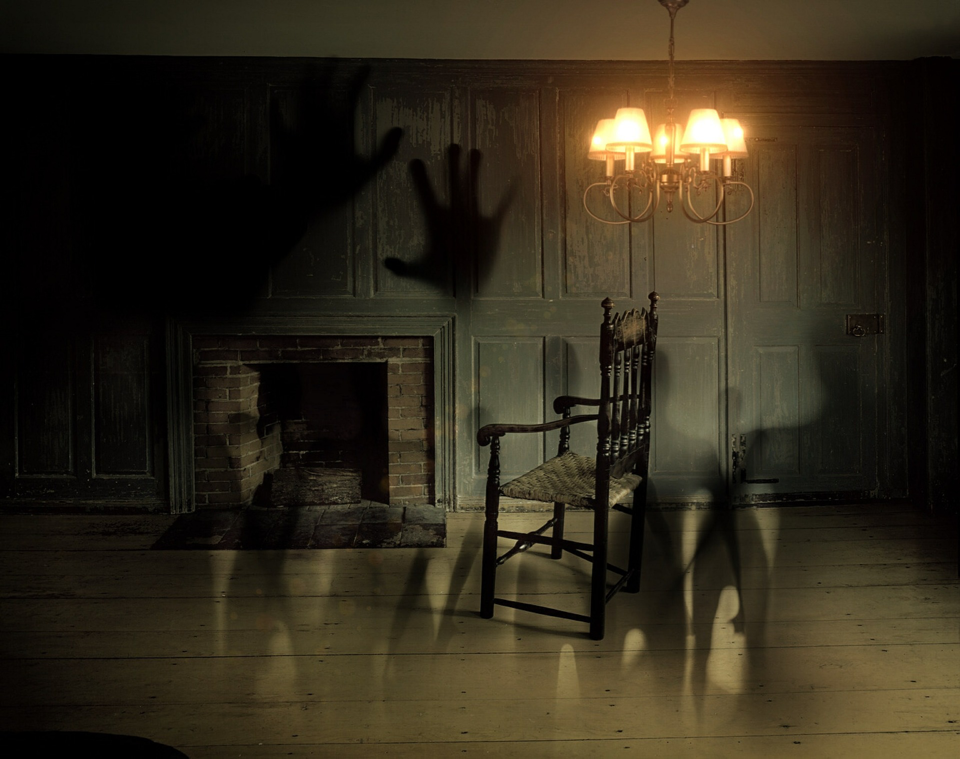The Enfield Poltergeist

In August 1977, in Enfield, a northern suburb of London, one of the most famous poltergeists of English – and perhaps world- history, took place. The events also include a possible demoniac possession of an eleven years old girl. Among the most significant occurrences, it is definitely worth mentioning the fact that the girl was also reported levitating above her bed. Up until today, many different explanations have been given to bring clarities to these unique phenomena, but as put by the British newspaper Daily Mail, ¨no explanation other than the paranormal has ever been convincingly put forward”
What is certain is that these disturbances have held the Nation spellbound for over a year.
The Events
It was, more precisely, eighteen months of inexplicable events, witnessed by more than 30 people, including neighbours, researchers and journalists, who claim to have seen objects flying from one side of the room to the other, furniture spontaneously sliding across rooms, and the daughters levitating several feet over their beds. Others claim to also have heard knocking noises and a demoniac voice coming from the house. The events continued up until 1979.
But how did it all start?
The events started on August 30 in the Enfield home of Margaret Hodgson. The divorced woman resided there with her four kids: two girls – Peggy and Janet, respectively thirteen and eleven, and two boys – Johnny and Billy, respectively ten and seven years old. On that day, Janet and Johnny tried convincing their mother that their bed started to shake out of nowhere, and on the following night mysterious knocking sounds were heard, along with noises of chest drawers sliding in the girls’ room.
It was at that point that Ms Hodgson decided to call the police for help. Once on 284 Green Street, the police constable witnessed a chair sliding from one part of the room to the other without any apparent reason, and the day after, Lego pieces and toys were flying around the room and bouncing against walls.
That’s when the suspicions started. Almost immediately after the beginning of the events, in fact, both the mother and the public started questioning Janet, who seemed to be the centre of most troubles within the household.
And for those of you who might be wondering if the dear mother actually had favourites, we are sorry to disappoint it wasn’t just her who noticed the pattern. Guy Lyon Playfair and Maurice Grosse, investigators of the events, observed and recorded many of the phenomena, and started to notice a pattern involving Janet in most of them. She was either the main focus of the incidents or around when they took place.
“She was always near when something happened, and this inevitably led to accusations that she was playing tricks, although Grosse was already fully convinced that she could not be responsible for all the incidents” (Playfair 1980, 37).
Her sister, Peggy, also seemed to be deeply involved in many of the events, even if not as much as Janet, who was even followed by the “poltergeist” at school and outside of the house. We have, for example, the testimony of a particular circumstance in which Penny was heard screaming that she couldn’t move, because something or someone was holding her. She was then found on the stairs with one leg extended behind her, almost as she was just pretending.
This wasn’t the only event that saw her involved in the first place: once, when the girls were separated, and Peggy was sent to a neighbour’s home, the problems continued in both houses. Instead, when both were out of the house -for example, one night in which Playfair was alone- nothing weird occurred. Some think that the poltergeist could have been in two different places at the same time, others that the girls were very skilled and smart, and enjoyed pranking everyone else.
Playfair once declared “Janet was all energy, big for her age, jumping up and rushing around on the slightest pretext, and talking so fast that I had some difficulty at first in understanding her. She had an impish look, and I could understand why some visitors to the house in the later months would suspect her of playing tricks.”
Play fair, who wrote the book ¨This House is Haunted: The True Story of a Poltergeist (1980)¨ about the events happening in the house, also had occasional doubts about the child, especially after hearing the recorded tape of a chest of drawers jammed against a wall. He heard, in fact, suspicious cracking noised as if someone had tried to silently slip up to it, that someone being Janet. He wondered whether it was all just a scam and started having many doubts once again. “The Thing”, the friendly name given to the Poltergeist, was very sneaky, and seemed to act only when no one was around to see it: that also raised suspicions against the two girls. Grosse stated: “It’s smarter than we are. Look at its timing—the moment you go out of a room something happens. You stay in the room for hours, and nothing moves. It knows what we’re up to”. Despite the suspicions and even though the two investigators found that the girls were, at times, “motivated to add to the activity with some tricks of their own”, they did not cave and kept thinking something paranormal was really happening. This was motivated by the fact that, as stated by Playfair “it did not bother us very much. We had already seen incidents with our own eyes that the children could not possibly have done deliberately”.
When the voice appeared, the investigators started wondering if Janet was actually working as a brilliant ventriloquist but came to the conclusion that it was not the case. Despite the fact that the voice would refuse to be heard unless the girls were alone in a room with the door closed, Janet’s lips were hardly moving. On the contrary, the thought of ventriloquism worked in favour of the authenticity of the whole story: it was in fact clear that The Thing ad Janet had a very strong connection. Sometimes, apparently, she ended up saying something that was clearly fabricated by the Voice, and Playfair seemed to be thinking that she wouldn’t have slipped so badly if she was faking the whole thing. When the professional ventriloquist Ray Alan came in for a consult, he reached the conclusion that the girl was faking it, to which Playfair quickly answered that even if that were true, the other events were still inexplicable.
Even when the girls admitted to the press that they had been playing everyone around, but Playfair immediately urged them to retract.
During the years, many experts of several fields came into the house to investigate and they almost unanimously came to the same conclusion: even if there might have been something paranormal to start with, the case had become pure trickery.
Among them, paranormal investigator Melvin Harris proved that what was supposedly the first photo sequence of a poltergeist in action, was instead a fake. The claim was that, according to Ed Warren, Janet was sound asleep, levitating in mid-air. What the photographs really show, instead, is the girl “levitating” on her bed, in a jumping position.
In 1979, the Enfield poltergeist had left the house without a particular reason or explanation, except for one more isolated incident. Some claim that the reason why the girls created this whole phenomenon was because of the tension within the household, due to the parents’ divorce.
What we don’t know is if it’s true that some events were simply not possibly blamed on the girls and if this is the case, who was responsible for them?
Janet, now fifty-two years old, was interviewed by the London Daily Mail in 2011. She lives in Essex with her husband, a retired milkman. She admitted to having fabricated some of the occurrences, but only 2% of them.
Well, either she is lying, or a poltergeist really was active in the house. Or could it be that maybe, some of the things happening were nothing but the product of someone’s fantasy?
The events taking place in the Enfield house inspired several projects, such as the movie “The Conjuring 2” from 2016, or an episode of the program “The Reunion” -BBC- from 2018, in which the people who were involved were interviewed years later.
When asked if she really thought that the house was haunted she answered, “Years later when Mum was alive, there was always a presence there — something watching over you.”
She also added “I knew when the voices were happening, of course, it felt like something was behind me all of the time. They did all sorts of tests, filling my mouth with water and so on, but the voices still came out. The levitation was scary because you didn’t know where you were going to land. I remember a curtain being wound around my neck, I was screaming, I thought I was going to die.”
After the mother died, the house was briefly occupied by another family, whose members claimed to not have seen anything but to have always felt uncomfortable, like there was a presence watching over them.
So maybe it was true after all.
Author Letizia
References
https://en.wikipedia.org/wiki/Enfield_Poltergeist
https://www.csicop.org/si/show/enfield_poltergeist
https://www.bbc.co.uk/programmes/b09yck6b
https://psi-encyclopedia.spr.ac.uk/articles/enfield-poltergeist
Back to news






